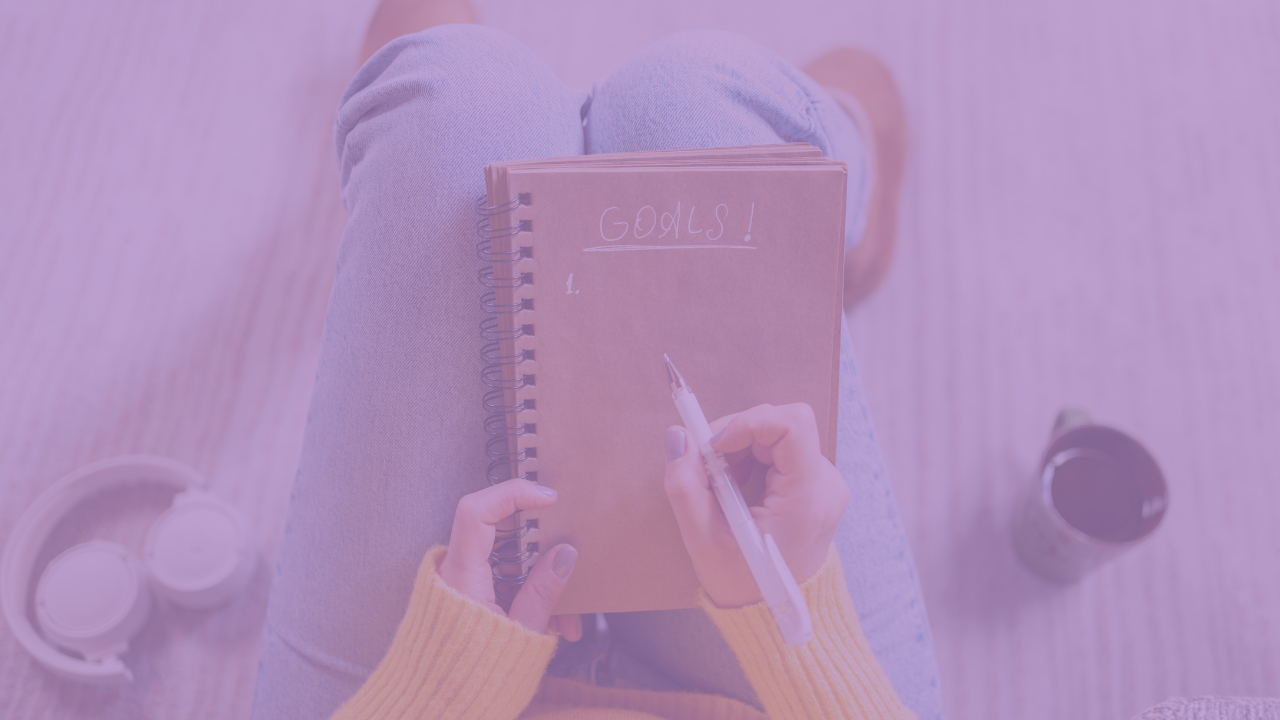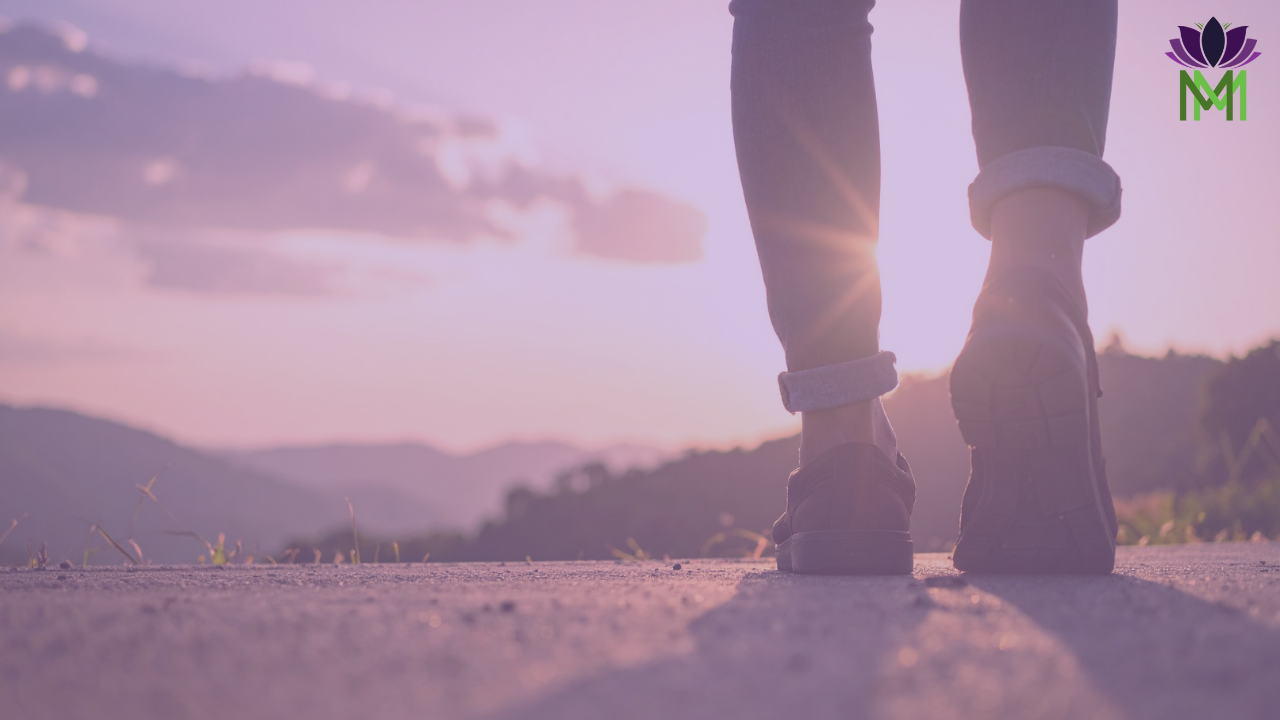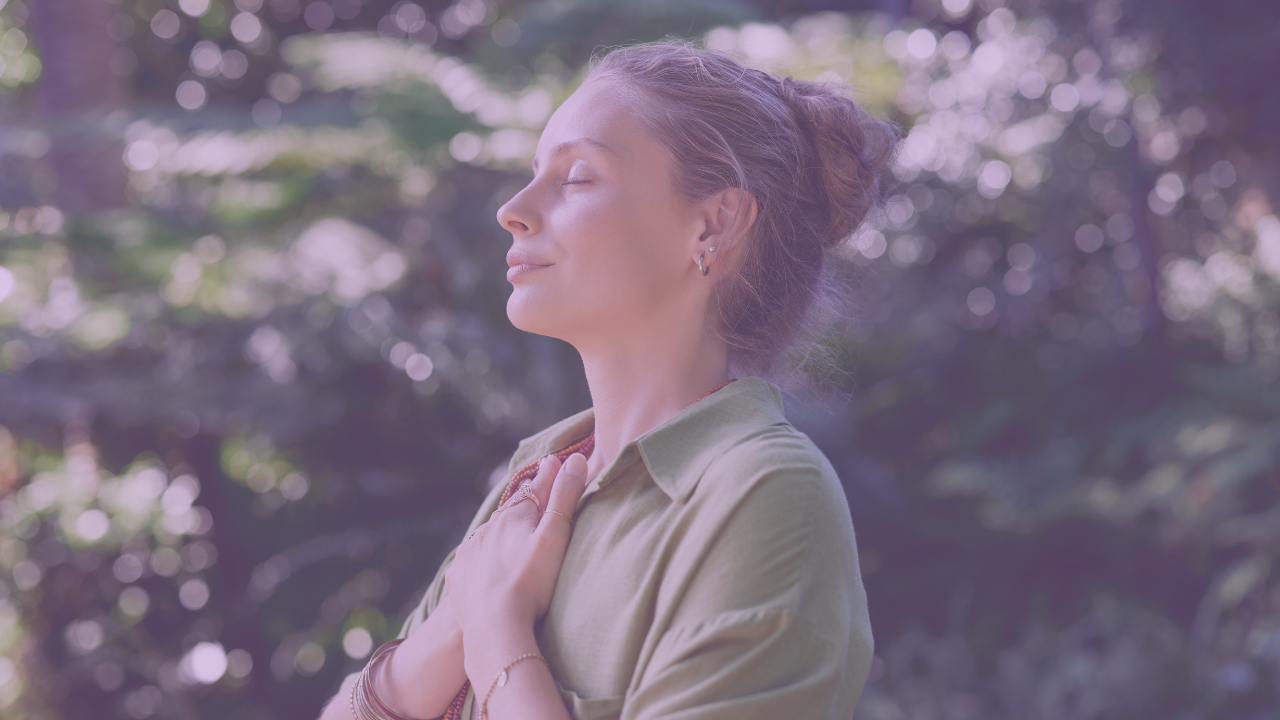In this ever-demanding world, stress has become a universal experience, and now more than ever, we need to equip ourselves with tools, strategies, and stress relief techniques to mitigate stress effectively.
In a recent YouTube video, I shared my favorite top seven stress-relieving tools and strategies to help find calm back in your life. So sit back, take a deep breath, and watch or read on.
Embracing the Present: A Key Stress Relief Technique
Let's dive into the first stress relief technique: Using your five senses to bring yourself into the present moment. When we find ourselves reliving the past, we can sometimes slip into feelings of depression or sadness.
On the other hand, when we incessantly worry about the future, we may feel overwhelmed and anxious. By rooting ourselves in the present moment, we open the door to calmness, peace, joy, and fulfillment. How, you ask? Whenever you feel overwhelmed or anxious, take a moment to pause and observe your surroundings.
Engage your senses, one by one, and ask yourself:
- What am I seeing right now?
- What am I hearing in this moment?
- What textures can I feel?
- What taste lingers in my mouth?
- What scents can I pick up in the air?
This practice brings you back into the present and could take as little as 30 seconds or as long as you need.
The Humming Breath Technique
The humming breath technique, an unassuming yet powerful exercise, serves as the next strategy in our stress-relief toolbox. This exercise entails inhaling through your nose in your typical manner and then producing a humming sound during your exhale.
Doing this technique is simple and can be practiced virtually anywhere. All you need to do is fill your lungs with a gentle, deep breath through your nose and create a steady, continuous humming sound as you exhale. If possible, extend your exhale for as long as you can comfortably manage, allowing the humming sound to resonate.
Beyond promoting relaxation, this technique boasts the additional benefit of stimulating the vagus nerve, a crucial player in our body's parasympathetic nervous system. This system helps to regulate heart rate and blood pressure, thereby reducing stress and anxiety sensations.
The duration of practice can range from as brief as a minute to as long as 10 minutes. The goal is to weave it into your routine and maintain consistency. Assess your state before and after each session to understand its effectiveness better. Paying attention to these nuances will help you tailor the technique to best serve your unique needs.
In essence, the humming breath technique is your personal 'calm' switch, offering a straightforward yet impactful method to quell the storm of stress.
Self-Hugging and Self-Massage
My third favorite stress-buster is self-hugging or self-massage. This technique nurtures a sense of self-compassion and comfort. By hugging yourself or massaging areas like your arms, face, jaw, neck, and hands, you create a soothing environment that promotes safety and self-care.
Start with a gentle self-hug, which can evoke feelings of comfort. Then, explore self-massage. Apply pressure to your arms, face, and neck, listening to your body's response to different types of touch. Massage your forehead, temples, cheeks, jawline, and even your ears to relax the multitude of nerve endings present in these areas.
Don't forget about your hands, a massage of which can be exceptionally soothing, especially if you work on a computer. The more you practice, the more you understand your body and its stress signals. This technique not only releases physical tension but also fosters self-love and acceptance, enhancing your stress management journey.
Grounding (or Earthing)
Yet another beneficial technique for stress relief is engaging in grounding activities. These activities are all about reconnecting with our planet, reminding ourselves of our inherent bond with the natural world.
The primary grounding activity involves direct, physical contact with the Earth – for instance, standing barefoot on a patch of soft, dew-kissed grass, feeling the grainy texture of sand slip through your fingers, or even laying down on a warm rock. These actions bring us closer to the earth's nurturing energy, enabling a unique sort of healing and tranquillity.
Tapping into the Earth's energy has a myriad of benefits. From the initial touch, a wave of calm washes over you, your tensions start to ebb away, replaced by a sense of peace and balance. This technique helps to ground you, quite literally, pulling you away from swirling thoughts and anxieties and bringing you back to the here and now. It is an act of recentering, reaffirming your place in the world and reducing your overall stress level.
Practicing grounding activities regularly allows you to establish a profound sense of connection with the natural world, which in turn promotes an overall sense of well-being. Even if it's just a few minutes each day, this interaction with nature can play a significant role in managing stress effectively.
The Power of Breathwork
Breathwork is a stress-relieving tool that is accessible to anyone, anywhere, and at any time. Mastering your breath helps put the reins of your mind and emotions back into your hands, allowing you to navigate stressful situations better.
There are various breathwork techniques you can utilize, but there are two that have proven to be particularly beneficial. The first is the 2-4 or 3-6 breath, a technique where you inhale for a count of two or three and then exhale for twice that count. For instance, you could inhale for two counts, then exhale for four. Alternatively, you could inhale for three counts, then exhale for six. The extended exhalation helps to slow your heart rate and prompts your body to relax.
The second technique is referred to as the 4-7-8 breath, where you inhale for a count of four, hold the breath for seven counts, and then exhale for eight counts. This breathwork pattern is known to have a profound calming effect, activating the parasympathetic nervous system, which is responsible for promoting a state of relaxation.
It's vital to approach these techniques with an open mind and a gentle manner. The goal is not to perfect a technique but to create a space of calm within you. As you practice, you may find that elongating your exhales, regardless of the specific counts, promotes a sense of peace and tranquility. Regular practice of these techniques can lead to better stress management, a more peaceful mind, and an overall sense of wellbeing.
Meditation, Prayer, and Silent Contemplation
Meditation, prayer, and silent contemplation are tried and true stress-relief tools, fostering tranquility by focusing our attention on the present moment.
Meditation, by centering on your breath or a mantra, promotes relaxation and self-awareness. Prayer, while often viewed as spiritual, offers comfort and peace, regardless of religious affiliation. Silent contemplation is a moment of unstructured quietude, an opportunity to unwind and recharge.
All these practices provide unique stress-reducing benefits. The key is to find the one that resonates with you and make it a regular part of your daily routine, nurturing inner calm and resilience amid life's inevitable stresses.
If you're seeking additional support and resources to enhance your meditation and prayer practices, I encourage you to explore the Members Oasis. As a member, you gain access to a wide range of ad-free guided meditations and prayers, creating a sacred space for your personal growth and spiritual exploration.
By carving out time for meditation, prayer, or silent contemplation, you gift yourself moments of peace and rejuvenation. Embrace the power of these practices and experience the profound impact they can have on your well-being.
Eye Movement Exercises
In addition to the previously mentioned techniques, eye movement exercises offer another helpful method for reducing stress and promoting relaxation. One such exercise involves intentionally moving your eyes between a close focal point and a distant one.
To begin, find a close object, such as your thumb, and focus your gaze on it. Then, shift your attention to a point in the distance, whether it be a tree outside your window or a building across the street. Take a moment to pause and allow your eyes to adjust to the new focal point. Repeat this process, alternating between the near and far focal points.
This exercise may seem unassuming, but it has a profound effect on calming the nervous system and releasing accumulated stress and tension. By deliberately shifting your visual focus, you engage specific eye muscles and encourage relaxation throughout your entire body.
As you practice this exercise, you may notice a sense of release as your eyes move back and forth, bringing a soothing rhythm to your nervous system. This rhythmic movement helps dissipate stress, allowing you to let go of the burdens that may have been weighing you down.
Incorporating eye movement exercises into your daily routine can be a valuable addition to your stress management toolkit. Take a few moments each day to prioritize your well-being and try this simple yet effective practice. By doing so, you empower yourself to find moments of calm and rejuvenation amidst the demands of daily life.
Remember, everyone is different. What works wonders for one person may not have the same effect on another. The key is to experiment with these stress relief techniques and find what works best for you. If you're looking for more support, community, and resources to manage stress, I encourage you to check out our Members Oasis to gain access to all of our ad-free content, exclusive members-only content, and group coaching calls.
As a member, you will join a supportive community dedicated to mindfulness, meditation, and personal growth. Feel free to check out our previous video that further discusses the wonderful resource that is the Members Oasis.
Managing stress is not a destination but a journey, one that you have the power to direct.
Remember, you are not alone in this journey. Do you have a favorite stress relief technique? Share it in the comments below. And if you found these techniques helpful, please consider sharing this post with others who might also benefit.
Sara Raymond







